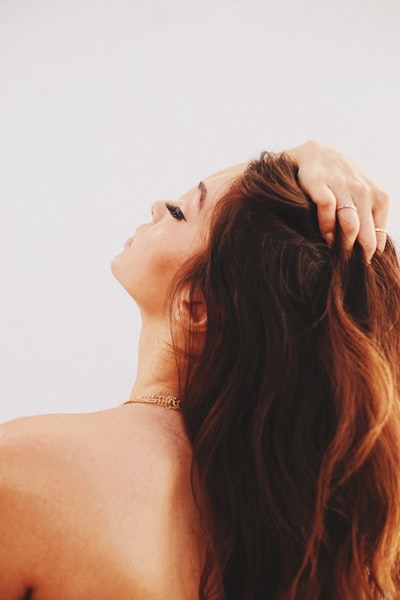Our hair is an important component of our identity and influences how we express ourselves. Hair differs widely from person to person in terms of color, texture, thickness, and growth pattern. In this article, we will look at the many types and textures of hair, the science behind them, and some common myths regarding hair care. Understanding your hair’s distinct features, whether it’s straight, wavy, thin, or thick, will help you embrace and care for it better.
To properly appreciate the variety of hair kinds and textures, it’s necessary to understand the fundamentals of hair science. Each strand of hair is generated by a biological structure called a hair follicle, which is located in the deep layers of our epidermis. The follicle generates hair shafts, which are comprised of a protein called keratin and develop from the scalp. The hair shaft consists of three layers: medulla, cortex, and cuticle. The medulla, located in the middle of the hair, provides structure, whereas the cortex gives the hair its color and strength. The cuticle, a thin protective layer that surrounds the hair shaft, serves as a barrier against damage and moisture loss.
The Biological Structure of Hair
The structure of each hair shaft and follicle is determined by our genetic makeup, resulting in the wide range of hair types and textures observed in different individuals. For example, thick hair tends to have a larger number of hairs, and each strand is generally wider in diameter, giving it a fuller and denser appearance. On the other hand, thin hair has a lower hair density, and the scalp may be more visible as a result. Curly hair is characterized by an irregular curl pattern, and straight hair has a smooth, straight texture.
Hair growth follows a cycle that consists of three different phases: anagen, catagen, and telogen. During the anagen phase, hair actively grows and cells in the hair follicle divide rapidly. This phase can last for several years, contributing to the length of the hair. The catagen phase is a transitional phase, where hair growth stops, and the follicle shrinks. Finally, during the telogen phase, the hair follicle remains at rest, and hair naturally falls out to make room for new hair growth.
Both genetic factors and selective pressure play a role in determining the length and thickness of hair, as well as the duration of each growth phase. Various genes and populations exhibit different hair growth patterns, which result in the diversity of hair types and textures that we observe.
Understanding Different Hair Types
Understanding the various hair types is essential for properly managing and styling our hair. Hair type refers to the overall structure and texture of a person’s hair, which is usually divided into many categories. Straight, curly, thick, and thin hair are some of the most common hair types. To preserve its health and look, each hair type requires a particular set of maintenance and style practices. Let’s take a closer look at each kind and discuss some strategies for managing and increasing their inherent characteristics.
Thick Hair
Thick hair is characterized by an abundance of hair and a larger hair shaft diameter. Individuals with thick hair often enjoy a voluminous and robust mane. The genetic makeup of an individual, including factors such as the number of hairs and hair thickness, contributes to the appearance of thick hair. However, individuals with thick hair may also experience unique challenges, such as longer drying times and difficulty managing frizz and unruly strands. Understanding the structure and genetics of thick hair can help individuals effectively care for and style their hair.

Thin Hair
On the other end of the spectrum, thin hair is characterized by a lower hair density and a thinner hair shaft diameter. Individuals with thin hair may experience challenges related to hair loss, breakage, and the visibility of their scalp. However, thin hair also has its advantages, such as being lightweight and easy to style. Proper care and styling techniques, including choosing suitable hair products and avoiding excessive heat and chemical treatments, can help individuals with thin hair maintain its health and enhance its appearance.

Curly Hair
Curly hair is known for its distinctive curl pattern and texture. The genetic factors and hair morphology determine the shape and structure of each curl, resulting in a wide range of curl types, from loose waves to tight coils. While curly hair can be stunning and glamorous, it also requires specific care and attention to maintain its health and manage frizz. Here are some important tips for curly hair care:
- Embrace moisture: Curly hair tends to be drier and more prone to frizz. Regular deep conditioning treatments and moisturizing hair products can help prevent dryness and enhance the curl pattern.
- Avoid excessive heat and styling: Heat styling tools can strip curly hair of moisture and lead to damage. Embrace natural hairstyles and limit the use of heat styling tools to protect the health of your curls.
- Use products for curly hair: Look for hair care products specially formulated for curly hair, such as curl-enhancing creams, leave-in conditioners, and frizz-fighting serums.
- Protect hair during sleep: To preserve and protect your curls, consider using a satin or silk pillowcase, or wrap your hair in a silk scarf, to minimize friction and frizz while you sleep.
Straight Hair
Straight hair is characterized by its smooth, straight texture and lack of curl or wave. The hair shaft of straight hair is typically round, and it tends to be more resilient and less prone to breakage compared to other hair types. While straight hair may appear relatively low-maintenance, it still requires proper care and attention to maintain its health and shine. Regular shampooing, conditioning, and protecting straight hair from excessive heat styling and sun exposure can help keep it looking and feeling its best.

Textures of Hair
In addition to hair types, hair texture describes the thickness and coarseness of each hair strand. Hair texture is divided into three categories: fine, medium, and coarse. Understanding your hair’s texture will help you choose the right style products and practices for optimal hair health and styling. Let’s look at each hair texture and its unique traits.
Fine Hair Texture
Fine hair is characterized by a smaller hair strand diameter and a delicate texture. The individual strands of fine hair are generally more fragile and prone to breakage than other hair types. Fine hair can lack volume and body, and it may be more susceptible to oiliness and scalp issues. To care for fine hair effectively, it’s important to choose lightweight, volumizing hair products that add body without weighing the hair down. Avoid heavy, oil-based products that can make fine hair appear flat and greasy.
Medium Hair Texture
Medium hair texture falls between fine and coarse hair and is often considered the most versatile hair type. It has a balanced thickness and strength, making it less prone to breakage and damage. Medium hair texture generally maintains a healthy elasticity, allowing for different styling options. Individuals with medium hair texture can experiment with various hairstyles and products without compromising the hair’s health. Keeping the hair moisturized, protecting it from heat, and avoiding harsh chemical treatments will help maintain the hair’s natural strength and flexibility.
Coarse Hair Texture
Coarse hair texture is characterized by thick hair strands and a robust, sturdy nature. Coarse hair tends to be stronger and more resilient, but it is also prone to dryness and frizz. The hair strand itself is larger in diameter, giving it a fuller appearance and texture. Due to its thickness, coarse hair may require extra moisture and hydration to keep it healthy and manageable. Using rich, nourishing hair care products and regular deep conditioning treatments can help maintain moisture and minimize frizz for individuals with coarse hair texture.
Read Also: How to Build a Loyal Customer Base for Your Personal Care Business
Caring for different hair types and textures requires an understanding of their unique needs and characteristics. Here’s a guide to effective hair care for each type:
- Coily hair: Regular deep conditioning and moisture are crucial for maintaining the curl pattern and preventing breakage. Protective styling and avoiding heat styling tools can also help preserve the natural curl.
- Curly hair: Look for sulfate-free shampoos and products that enhance moisture retention. Proper styling techniques, such as the use of diffusers and embracing natural hairstyles, help maintain curl definition and minimize frizz.
- Straight hair: Opt for lightweight, non-greasy conditioners and heat protectants to keep straight hair healthy and protected from styling damage. Avoid excessive heat styling and be mindful of scalp health.
- Fine hair: Use volumizing products and avoid heavy, oil-based hair care products that can weigh down fine hair. Regular trims and avoiding excessive heat and chemical treatments can help prevent breakage.
- Medium hair: Medium hair texture is versatile and resilient, making it easier to manage and style. Regular moisture and scalp care, along with heat and UV protection, support overall hair health.
- Coarse hair: Focus on maintaining moisture and hydration in coarse hair. Deep conditioning treatments, leave-in conditioners, and protective styling can help combat dryness and frizz.
Hair Care Tips
According to the American Academy of Dermatology (AAD), people can try the following when caring for their hair:
- Shampoo: Wash the hair with shampoo as often as needed. This will typically be when the hair becomes oily, which can happen at different rates for different people. Those with oily skin and hair may need to shampoo more often. Concentrate the shampoo on the scalp.
- Condition: A person should use a conditioner after each shampoo. Concentrate the conditioner on the tips of the hair.
- Dry: People can either wrap their hair in a towel and let it air dry or use a blow-dryer on the lowest setting. Using a blow-dryer can cause more damage to the hair than natural drying. However, there is research to suggest that using a blow-dryer at a distance of 15 centimeters Trusted Source and moving it continually can cause less damage to the hair than air drying.
- Brush: Brush the hair when it is damp using a wide-toothed comb.
People should select their shampoo and conditioner based on their hair type.
If possible, they should try to limit:
- Weaves and hair extensions: If possible, wear weaves and extensions that are lightweight. Wearing hair that is tightly pulled back can lead to hair loss, or traction alopecia.
- Chemically treating the hair: People should try to leave some between color touchups. In addition, they should try to have one treatment at a time. This is because very treated hair is more prone to breakage.
- Drying the hair using a towel: This can pull or twist the hair, causing it to snap. It can also ruffle the hair cuticles.
The WTS notes that people shed approximately 50–150 hairs per day. This can occur through hair washing, brushing, and combing. However, some people lose more hair than they can grow.
This can happen for various reasons. One common cause is androgenetic alopecia. This is a genetically predetermined condition that affects around 50%Trusted Source of people. In males, hair loss occurs at the temples and the top of the head. In females, hair loss can affect the crown.
Hair loss can also occur in females due to other health conditions, including:
- polycystic ovary syndrome
- a side effect of medication, such as birth control
- thyroid problems
A person should contact a doctor if they:
- experience sudden hair loss
- develop bald patches
- lose clumps of hair
- experience itching and burning sensations on the scalp
While different hair types have varied care requirements, hair health is influenced by a variety of factors, and it is crucial to highlight that hair type does not predict total hair health. Hair type, texture, and overall health are all heavily influenced by genetics and individual differences. Genetics, scalp health, hair care routine, and external factors such as styling, food, and overall health are all important contributors to hair health.
Maintaining a healthy scalp, addressing any hair concerns as soon as possible, and following an appropriate hair care routine are all essential for achieving maximum hair health, regardless of hair type. By understanding and embracing the characteristics of your own hair type, you can create a personalized hair care routine that caters to your unique hair needs and enhances its natural beauty.
Conclusion
Understanding the science underlying various hair types and textures is essential for proper hair care. Recognizing the basic structure of hair and how it grows allows you to personalize your hair care routine to match its unique needs. Understanding your hair type, whether it is thick, thin, curly, or straight, allows you to select the appropriate products and style procedures.
Additionally, vitamins and hormonal changes have an important influence in hair health. You can keep your hair healthy and beautiful by refuting common hair myths and sticking to a specific hair care program. Remember that there is no direct correlation between hair type and hair health; it is all about recognizing and nurturing your individual strands. So accept your hair’s natural texture and give it the care it deserves.


